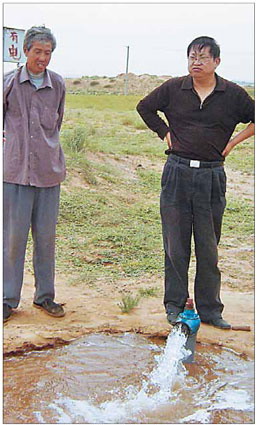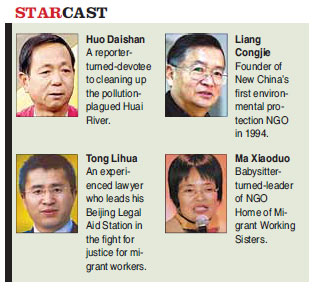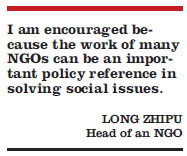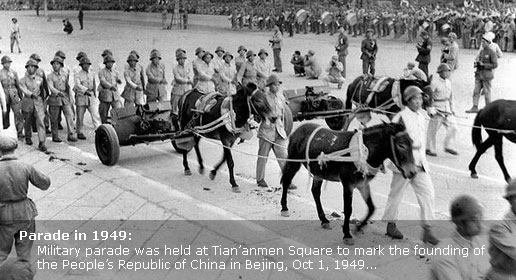60 People, 60 Stories
Bottom up
By Wang Zhuoqiong (China Daily)
Updated: 2009-09-30 06:26
|
 Long Zhipu (right), who leads an NGO working for poverty alleviation, helps farmers with an irrigation system. [Courtesy of Long Zhipu]
|
New technologies are not for farmers, thought Long Zhipu, then a government researcher on desertification in 1992.
Long was leading a pilot project in Yanchi county of the Ningxia Hui autonomous region in west China to design a model to help shepherds raise pigs, preventing sheep from depleting grass on the land.
But villagers in the remote desert found various obstacles in implementing their plan, including bad roads and a lack of forage.
"Bits of difficulty buried our plan," Long recalls. The obstacles served as a big wake-up call to Long, now 46. He realized the problems were not the farmers.
Seven years later, Long, who set up the first nongovernmental organization (NGO) in Ningxia to lift poor farmers out of poverty and improve the local habitat, decided to listen to what farmers wanted for themselves, rather than make a decision from the top.
The NGO then was also a very new concept.
Long found that the groups, freed from the cravings of profit or the bureaucracy of the government, could be alternative answers to social problems.
| ||||
He cited the microcredit loan rate as one such example.
The local governments had considered it wrong to raise microcredit loans among poor farmers. But Long and his colleagues found that government microcredit loans at low interest rates were often taken up by village officials or those in advantageous positions.
Since 1997, Long's organization has issued about 40 million yuan to nearly 6,000 farmers, of whom 93 percent are middle- and-low incomers.

The organization has 14 people working in the main office and hire 25 people to work on microcredit finance projects, with each of them in charge of 20 villages.
Long Zhipu's NGO on poverty alleviation and environmental protection has been a mirror in the country's progress in developing its civil society. According to the Ministry of Civil Affairs, by 2008, China had about 230,000 social groups, including 1,597 foundations working for various causes.
International practices and ideas make local NGOs grow quickly, Long says of his experience of cooperating with China Agriculture University and international development agencies.
In addition, the key to the success of their project is the involvement of local farmers.
"We design our services together," he says. The engagement among farmers in a loan group creates powerful pressure to pay off debts.Passion and devotion have driven the NGO success, he says. But how long it can last is a question he cannot answer with certainty.

"For NGOs, we need a big leap in terms of mindsets and ideals," Long says.
"For the social environment, sometimes, I feel powerless. But most times, I am encouraged because the work of many NGOs can be an important policy reference for solving social problems."
Time line
1949
China has 44 registered national social organizations and thousands of regional ones.
1950s
The newly born PRC launches campaigns to reshuffle massive registered grassroots NGOs. Ultra-religious, feudal and reactionary ones are dismantled. NGO mafia and gangster groups are purged.
Early to mid-1960s
Social organizations prosper. By 1965, China has nearly 100 national social organizations and more than 6,000 local ones.
1966-76
All traditional forms of social organizations and NGOs are shut down, giving way to spontaneous "rebel" groups in the early years of the "cultural revolution". The "rebel" groups are later disbanded.
1978-1980s
NGOs bloom again as market reforms start.
1987
The central government extends cooperation with foreign NGOs.
1989
China has 4,446 NGOs.
1990s-2000s
The number of registered NGOs in China skyrockets to 266,600 by 2003. Experts say 3 million, 2 million of which are at the village level, is a more accurate estimate. More than 500 foreign NGOs were registered in China as of 2003.








